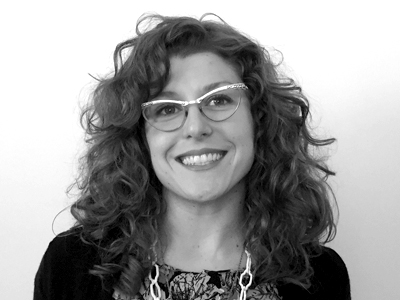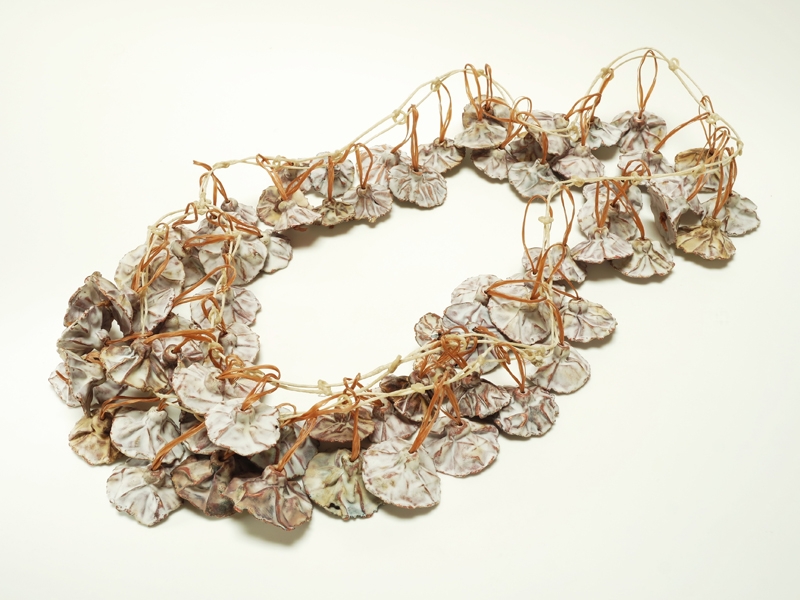
Oakland, California-based artist Deborah Lozier draws inspiration from moments that can only be observed while remaining attentive to the present, working in an intuitive, responsive manner to create both jewelry and objects. In this detailed interview, Deborah describes her journey as a maker, her unique methods and techniques, and her 20+ years as an adjunct professor at the California College of the Arts.
Adriane Dalton: To begin, tell our readers about yourself. Where are you from? What’s your educational background?
Deborah Lozier: I grew up in a Midwest suburb—West Des Moines, Iowa. Iowans are grounded and humble people. They don’t have mountains and oceans. They have sky and earth—the horizon line. Even though it’s located in the middle of the country, everyone living there completely understands that it’s not the center of the universe. I lived in the same general area my whole childhood, but my family still moved quite a bit. My dad was super-restless. I had to change elementary schools three times, which I think created a feeling of isolation. I was super-shy and quiet but loved learning and exploring, so I did so on my own. Just like I do now in my studio. I think who we are as children is probably who we’ll always naturally be throughout life.
When I was 18, I left for Tempe, Arizona, to attend college. It seemed like the place most opposite where I was from, so that’s why I picked it. I initially studied architecture. I don’t think I even realized a person could major in art when I began. But I meandered into David Pimentel’s jewelry and metalsmithing program on a whim. I needed a class at the last minute and beginning jewelry was open. I had taken two jewelry classes in high school. The 1970s were at the end of a great moment for art education in the public schools. I figured it would be an easy A. Ha ha! Because I already knew everything there was to know, right? One of the graduate students was my teacher, and both she and David changed my life.
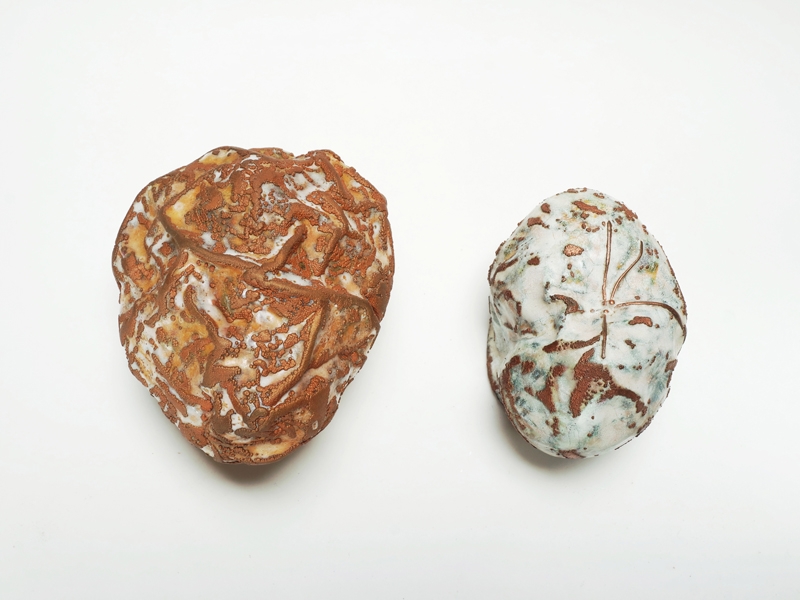
How did you arrive at jewelry, and more specifically enameling, as your predominant mode of making?
Deborah Lozier: Jewelry was always a natural approach for me, although I often struggled with its definition and, to be honest, was self-conscious about making it. I never felt like my skill sets were precise enough. I worked for a goldsmith right after college and was laid off because I kept dropping the diamonds and scratching the stones. I now understand that the part that sits with me is my love of the human condition. People are my muse. I see the scale and intimacy like sculptural poetry—every moment counts. The early jewelry I made was literally like wearing myself from the inside out. It completed me. How I appeared from the outside did not represent what I had to say from the inside. When I wore my work, I felt I made a more resolved first impression.
The enameling happened for a few reasons—all very random yet perhaps meant-to-be moments. I had a campus job in my last year of college at the Matthews Art Center at Arizona State. My first task was to take down a June Schwarcz show. I can still remember how I felt looking at that work. Awestruck. I started exploring enameling literally the next day and never stopped. Enameling is both an art and a science. All these years later, it still surprises me. The second random moment was a gift from an ASU graduate student—my beginning jewelry teacher. She had enameled as an undergraduate student and it wasn’t for her. When she graduated, she gave me her box of Thompson unleaded enamels. What I was left with upon my own graduation was that memory of June’s beauty along with this box of promise. My independent and isolated demeanor, along with a lack of funds, was the reason I initially fired the enamel with a torch. Limitations are often a defining gift.
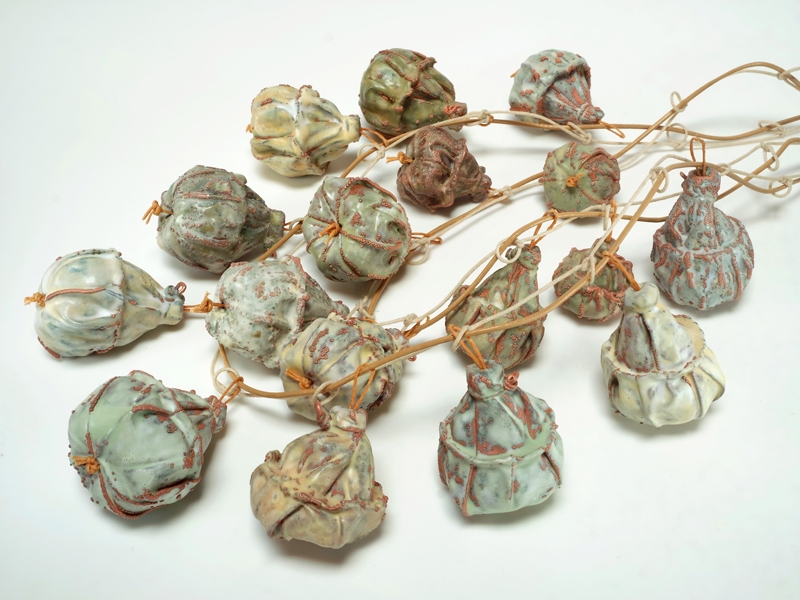
For readers who may not be familiar with the technical processes involved in creating your work, can you describe the key aspects of how your works are formed and finished?
Deborah Lozier: I’ve made a big shift recently in how I form my pieces. I used to hammer, raise, die form, and texture everything. The forms I create now are somewhere between cloth and metal. I fabricate them out of fine copper screen. I sew and hammer; anneal and work harden; turn them inside out and backwards. The screen is malleable and impressionable, delicate yet sturdy. It’s much more of a direct and quiet approach than fabricating sheet metal, but my experience with fabrication is what leads the process. I use the tips of my skills, but it’s the more refined skills gathered through experience and time on the planet.
The forms are initially delicate and ephemeral. I then electroform, a process June Schwarcz also used exclusively. The pieces are submerged in a copper sulfate bath and electricity transfers copper onto them. I give them just enough mass to be self-supporting, but not so much as to make them heavy. There’s an intuitive balance of when to stop adding metal. Then I enamel them. I’ve simplified things here, too. Experience has allowed me more initial confidence and commitment to color, seeing them through more directly. I then often electroform them again, growing metal in the areas the enamel didn’t cover. This layering of processes feels like a natural, organic growth spurt when all goes well. A human-made act of nature.

In your artist statement, you describe your process as “intuitive and responsive.” Please elaborate on how this plays out in the creation of your work.
Deborah Lozier: Call me crazy, but a good day in the studio has another voice in the room guiding me through. Is this what it means to be present and in the moment? I’m not sure. But at its best, there’s this calm in my decisions that becomes so grounding and reassuring. It’s not something I feel every day, but I always crave it.
I also listen to the materials themselves—it’s that moment which connects cause and effect that holds the truth—and, like making a drawing, the decision I just made helps determine the decision I’ll make next. I definitely don’t have everything planned out before I begin. The active process of making is the whole point to me. I’ve heard writers talk about how their story unfolds as they’re making it. There’s a seed of a beginning, perhaps even a hope for the end, but they channel the characters in order to tell the story and come to a resolution. I think that’s what happens with me. At their best, the works complete an emotion and allow me to move on to the next in peace. I know when something is finished because it will give me a sigh of relief. If I don’t feel this, it either needs more time, I missed its moment and overworked it, or it’s just never going to get there. Perhaps I’m not ready for it and we will resolve it later on? The big artist’s dilemma: Should I stay or should I go?
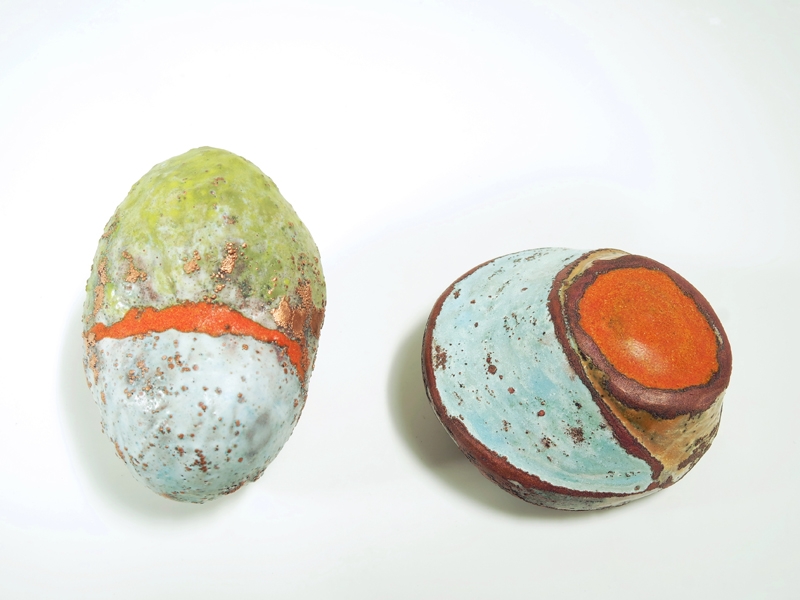
What’s a day in your studio like? What sort of environment do you cultivate for yourself when working?
Deborah Lozier: Life gets in the way of that perfect day in the studio. Finding my focus and balancing the emotions of who I am are a constant battle. Burrowing into my creative world doesn’t always match the needs and responsibilities of the day.
My studio is situated right in the middle of inner city Oakland, so reality streams by at a constant pace. But a good day often starts with this series of rituals. I turn on NPR, or a podcast of something more optimistic like This American Life. I walk to the spot where I left off in the previous session and ask the work what it needs. Do I like where it’s going? Do I know where to take it next? I often make a drawing or write or do some research on the thread I’m working on. Going to the source of an idea or emotion often offers a direction. Sometimes I’ll just start doing something with my hands: hammering metal, sewing the copper screen, crocheting, folding paper into forms that may evolve into a piece. I’ll look at my collection of ephemeral items piled on one of my many tables and rearrange them. It’s always kinetic.
When people visit my studio and see this burst of activity on every table in this huge room, they often ask me how many people work here. I guess I’ve taken Virginia Woolf’s A Room of One’s Own to an extreme, but this ritual of working day by day in this private space has defined my life. I’ve struggled with anxiety and depression since I was young, and believe being a maker is why I’m still standing strong. I tell my students that being an artist is a hard way to make a living, but it’s a beautiful way to make a life if you can get away with it.

You mention drawing inspiration from “simple, everyday occurrences.” What do these include, and how do you transform the observations into objects?
Deborah Lozier: Many of my forms are translations of the passing of time in the subtle, yet defining, cycles of life—a dried and curled leaf, seedpods, or sticks I discover on a walk; a difficult event in my neighborhood, or a haunting description in a novel; watching the amaryllis bulb go from leaves, to bud, to full bloom, and back inside herself only to begin again next year; coming home to a pile of bougainvillea blooms released at my doorstep; finding the remains of a moth left dormant after laying her eggs.
I live in a house with big windows that let in so much beauty. But at certain times of the year, they inspire birds to fly right into them. Its tragic to come home to that abruptly ended life at my doorstep, or witness it firsthand while eating breakfast. They always look so incredibly beautiful and at peace. I started photographing them, then burying them in the backyard and trying to figure out a way to make it stop. Somehow recording the event gives me some sort of resolve. Life happens and I just need a way to try to make it better even when I know that isn’t possible. These simple acts and occurrences of the day evolve and meander into my sketchbook through writing and drawing.
Some of them form a larger direction and become inspiration for a series of pieces. I lay things out on tables and store collected materials in boxes and drawers. The formal work I let out in the world to show and sell is only a small part of the process. I never know when an event, memory, or collection of items will turn into something I consider “finished.” It’s usually not that immediate. I’m a patient person. I have a Baba Ram Dass quote posted in my studio, and I live by it: “At first you will think of practice as a limited part of your life. In time you will realize that everything you do is part of your practice.” The gift and the curse of being an artist is that the working day never ends.
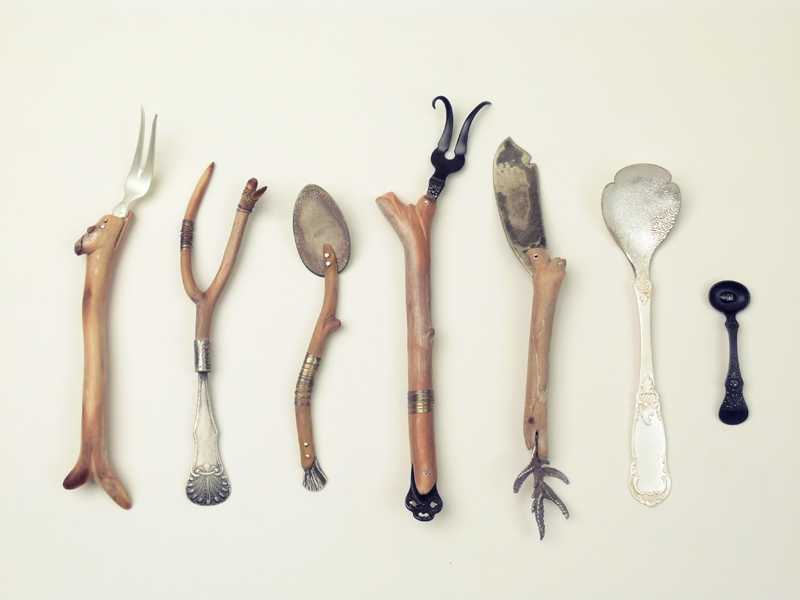
Your work isn’t limited to jewelry, but also includes sculptural objects displayed on a plinth or hung on a wall. How do you decide which ideas will take which forms?
Deborah Lozier: This is a hard question and one I grapple with often. Some of the sculptural works are formal explorations of materials. I like pushing to find what they have to offer, and going up in scale is one way to do this. I consider wall pieces jewelry for buildings. There are practical reasons, like an invitation to create a piece of Judaica or a piece for a public art commission, or an opportunity at a gallery that only represents jewelers. But those are special circumstances and are not directly linked to my personal inspiration and direction.
I admit to having an awkward sense of scale. As jewelry, my work is fairly large. But in a sculptural sense, it’s small. I also think making something wearable takes foresight in order for it to function and succeed. Sculpture can be more open-ended technically from the beginning, which is freeing. It can be fragile or heavy and no one will complain, but if it’s too small, it becomes lost and that is where jewelry makes sense to me. Even if it’s not practical to wear, creating a piece with the body in mind gives it an automatic sense of place. One can visualize the act of wearing it even if one never does.
I confess there was a time when I felt this outward need to make work that was bigger and that stood on its own. I was conflicted. I think using the format of jewelry as an expression of emotion takes some amount of artistic courage to pursue. It’s such an obscure and small field. It chooses you. My ego wanted me to work big, but my nature has always been in a smaller and more intimate scale.
Menopause has given me a moment of clarity. Nature abandons you. The wonderful part of this is, once I got over the initial shock of hot flashes and grief, I now can listen to myself without distraction. My purpose is of my own making. I am naturally drawn to this intricate world surrounding the body, and there’s nothing wrong with this. Embrace it!
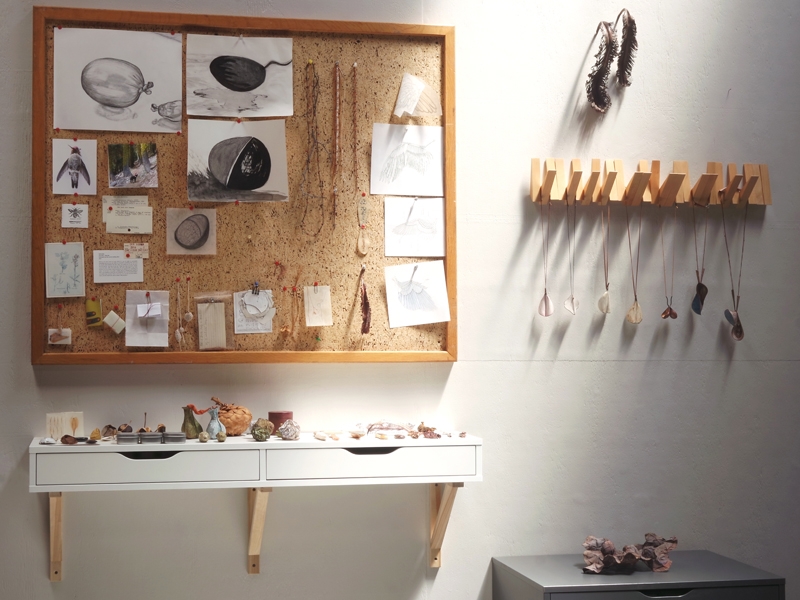
The brooch entitled Finding Her Balance is from The De Patta Project (organized by Mike Holmes and Elizabeth Shypertt in 2015) and uses stones from the estate of Margaret De Patta. Tell us about the making of this piece, the form, and your materials.
Deborah Lozier: Finding Her Balance was a great moment for me personally. I didn’t come to the planet grounded with self-esteem. Although I do stand by my convictions, I struggle asking for what I need. I chose this collection of stones because it came with a small pencil sketch Margaret had made for them. Margaret De Patta is an icon in the Bay Area. I love both her work and her legacy, but it’s obvious I do not have her sensibility or skill set. Where she is light and air, I’m earth and shadow. I have no idea how she managed to technically make her work. It literally floats.
I really struggled getting started. Then Mike Holmes contacted me and wanted the collection of stones returned. Because they came with a sketch, he felt they would be better left untouched. I could pick something else, but I was already emotionally connected to them and resisted his request. He reluctantly, yet graciously, let me move forward. No pressure, right?! I wrote a lot at first. Sometimes words flow out and help me gather meaning. I researched her and tried to get into her mindset and inspiration. Finally, I retreated and went to the source—her sketch—and translated her idea into my own language by making a paper collage based on it. When I stepped back to see what I had made, I realized the core of her idea was all about balance. I knew how to begin.
I felt her presence in my studio the whole time I worked on this piece. I’m certain she was not pleased initially with my direction. She was the quintessential jeweler, and my skill set and aesthetic was not hers. But we had a dialogue throughout. I kept explaining that the piece had to reflect me as well. This was a collaboration. I hope we ended on good terms. Elizabeth Shypertt told me it was the first piece to sell in the exhibition.
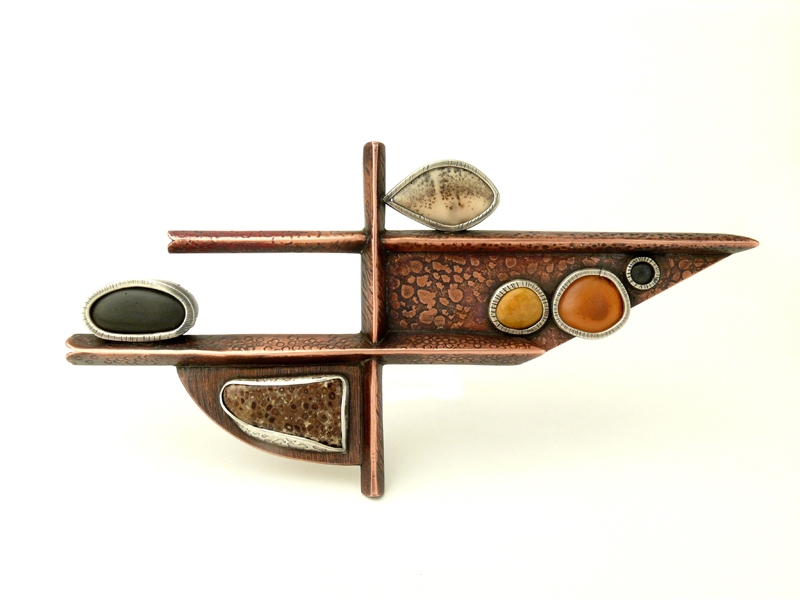
How does your career as an educator influence the way you approach your own work?
Deborah Lozier: Teaching is such an important part of who I am. Making is such an inward flow of energy. Teaching is quite the opposite, creating a release and an outward flow. I need them both to create balance, but of course this isn’t that simple to maintain. Boundaries are something I struggle with in all areas of life, so my relationship with my students is no exception. I could never teach full-time and get anything else done, because I tend to put the needs of others ahead of my own. But without this connection to something other than my studio I think my life would be pretty small, so I’m grateful for this path.
My most constant relationship has been with California College of the Arts, where I’ve taught as an adjunct since 1994. Watching the ebb and flow of the magical time only a college art program can provide has been such a gift. College was most definitely the most present moment of my life so far. No looking back and no looking forward, just one semester at a time.
I think the most significant contribution teaching has made is how it demands me to look at my own practice, both technically and spiritually, with more honesty and depth. What am I doing and why am I doing it? Is it sustainable? Conveying the daily ritual of being an artist, in a language that inspires the students to search for their own voices, forces me to filter through my own sense of self. Also, watching how others use materials and processes is unbelievably productive. I’ve learned things from students I would never have realized on my own. We all problem-solve differently, asking our own questions. For the science of enameling specifically, which is so broad, having a room full of people exploring directions is powerful.

Beyond technical skills, what do you wish to convey to your students?
Deborah Lozier: My approach to life is philosophical and so goes my approach to teaching. I teach them how to explore and expand on processes through their own eyes as individuals. We are tool-making, problem-solving animals. If you can be an independent explorer, you can teach yourself how to make anything. I teach them to use all of their eyes. The two obvious ones, of course, but then there’s the very important third eye nestled inside your mind, the eyes at the tips of your fingers, and there are even a few translating inside your ears. If you tell your brain that your hand is in the form of a jeweler’s saw, it listens. I teach them that good habits—rituals—are formed basically in the same manner that bad habits are formed. One day at a time. Make them count.
I encourage them to see that magic moment between cause and effect. Regardless of how I tell them to do something, if they get positive results, keep going. If not, change what you’re doing! One must be both humble and brave to be a maker, two traits that do not easily meld with each other. Our biggest strength is also our biggest weakness—know when it’s serving you and when it’s in your way. The greatest gift a student has given me recently is this final thought as I was helping her finish her late, last project. “I think I chose the right major. It is not just about making a better object. It is about becoming a better person.”
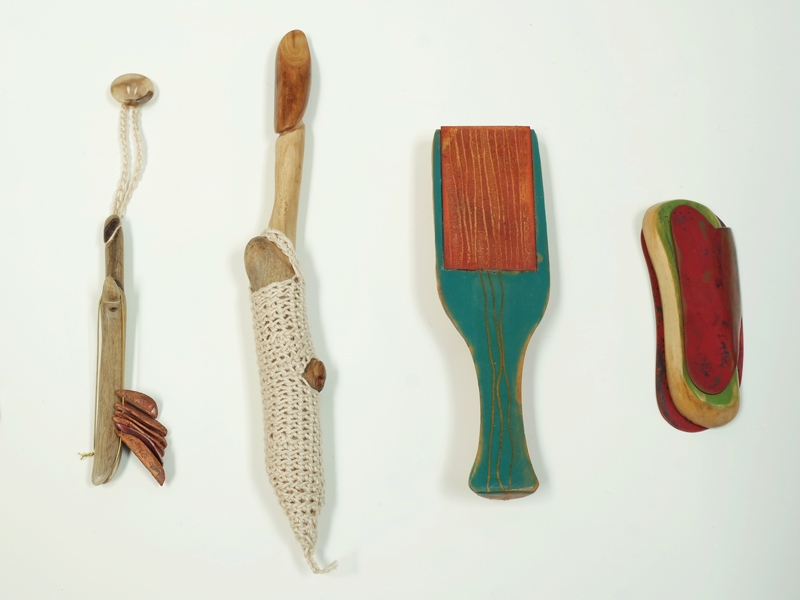
What are some media you’ve consumed lately? Books, films, music, art …
Deborah Lozier: I’ve been teaching myself to play the ukulele and have been memorizing Leonard Cohen songs. They’re both wonderful poetry and easy chords. “A Bird on the Wire”and “Hallelujah”are two that I’m working on now. Memorizing the words along with the chords is like making a drawing of a beloved object. You think you knew it, but you just really didn’t. I’m reading the novel I Know This Much is True, by Wally Lamb, and the catalog Iris Bodemer Rebus Jewelry 1997–2013.
